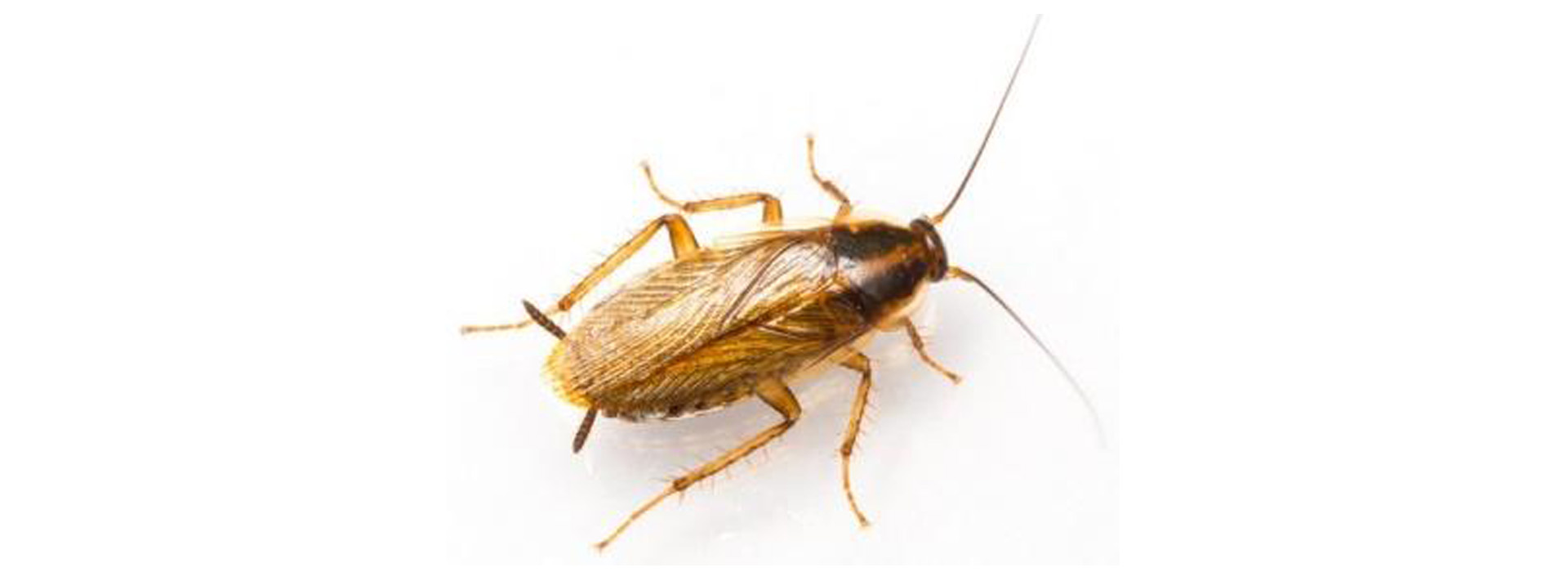
26 Sep Cockroaches
Background Information
German and Oriental cockroaches are the most commonly found species in the UK. Control is necessary where they infest a property as they can carry disease-causing organisms such as Salmonella and E. coli.
It relies on a combination of good housekeeping practices by you, and strategic use of chemicals by us. There are some things that you must do before and after the visit to help make the treatment work effectively. Insecticide treatment may not work alone, depending on the severity of the infestation. See below for information about the treatment and the common species of cockroaches.

What Does A Treatment Involve
Visits are usually booked at least a day in advance, to allow you to carry out a thorough clean. Each visit will take around 1 hour. Treatments consist of at least 3 visits spaced approximately one month apart. For extremely severe issues the visits can be closer together.
- Prior to our visit we expect you to have thoroughly cleaned your property, particularly in the kitchen and if possible behind white goods, such as fridges. A thorough vacuum and clean down of surfaces is imperative, as our insecticides are not as effective on a dirty surface.
- The technician will undertake a thorough inspection of your property to try to find the source and extent of the problem to ensure our treatment is as effective as possible. This will include the placement of cockroach monitors in discreet locations.
- The technician will spray all areas with a residual insecticide that contains an insecticide and an insect growth regulator. They will also use a gel based bait for use in areas of high activity.
- A month after the previous treatment we will call to arrange the next visit. Each treatment will be exactly the same and a deep clean will need to be carried out prior to every visit.
NOTE: Cockroaches carry their eggs in an egg case; these are unfortunately extremely resilient to insecticides, therefore our treatments can only affect the nymphs and adults. See page below for information on specific species.
Help Prevent Re-Infestation
- Do a thorough clean before each of the 3 visits.
- Following the treatment we will leave down some fresh monitors; please check these at weekly intervals for up to 3 months following the third visit. Some species are harder to eradicate than others due to their life cycle (see page below) and therefore an extra visit may be required.
Please Note:
Our treatments are designed for moderate infestations in a single dwelling. If you have a very severe infestation or are part of a complex (such as flats) then more visits may be required. A tailored plan may be more suited to your needs, please contact us using the details below.
Monitors
These are sticky cardboard traps used to help map the extent of an infestation and to determine where the source of the cockroaches originated from. They are not used to directly control the cockroaches
Please do not throw these away!
Residual Insecticides
Infested areas are sprayed with an insecticide solution that dries onto the surface. Please arrange for the property to be vacant of people and pets while we carry out our treatment. The insecticides we use are not hazardous to people or pets once they have dried, but can cause some slight respiratory issues if inhaled when wet.
These insecticides remain active for two weeks following the spray. Please refrain from mopping or vacuuming treated surfaces during this time, as it will reduce the effectiveness of the treatment
Commonly Encountered Cockroach Species
German Cockroach (Blattella germanica)
Life cycle: Egg case carried by female for up to 4 weeks until just before hatching. Nymphs take average 3 months to reach maturity. Adults live an average of 6 months. Prefer hot environments
Appearance: Adults 12-15mm long. Pale brown, with long antennae and 2 obvious dark brown stripes on the head
Feeding: Need a free water source. Can scavenge on any form of organic material, such as starches and meats, glue and human waste!
Habitat: Nymphs and adults cluster together in narrow harbourages close to food and water sources, such as around water pipes, at the back of fridges/microwaves, in cracked tiles
Notes: Can climb up smooth surfaces (ie glass, tiles) and can spread human disease organisms such as E.coli
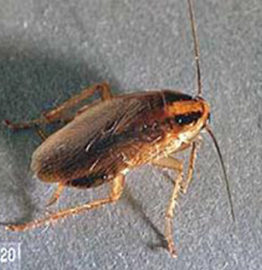
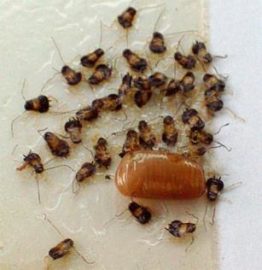
Oriental Cockroach (Blatta orientalis)
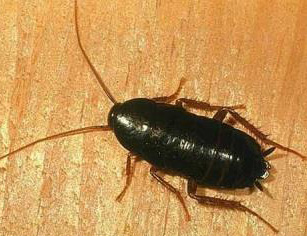
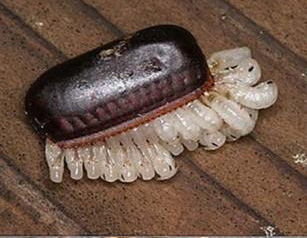
Life cycle: Egg case deposited in harbourages; incubation time average 6-12 weeks. Nymphs develop slowly; can take up to 2 years to reach maturity. Adults live up to 6 months.
Appearance: Adults 17-30mm long. Dark brown to black, shiny and flattened body. Long antennae.
Feeding: Need a free water source. Can feed on a wide range of foods, but prefer decaying organic matter; often forage in rubbish bins.
Habitat: Nymphs and adults cluster together. This species is more cold tolerant and can be found outside and in drain and rubbish tips. Can’t tolerate extremely hot and dry conditions.
Notes: They can climb rough surfaces like brick, but not smooth surfaces. Direct evidence for disease transmission is scare with this species. Due to the fact that the egg cases are hidden away and it can take over 12 weeks for nymphs to emerge Oriental cockroaches can be more difficult to eradicate than German cockroaches. A further chargeable visit may be required if more are seen months following the initial treatment, therefore please be sure to check the monitors left behind after the treatment.
Other Cockroach Species
American Cockroach
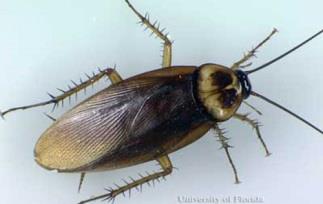
25-40mm body length. Distinct pale band on head
Usually found near ports and heated areas ie zoos, greenhouses
Control similar to Oriental cockroach
Australian Cockroach
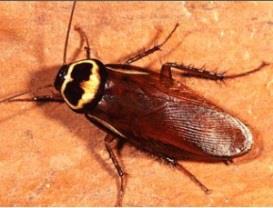
25-40mm body length. Distinct pale band on head
Usually found near ports and heated areas ie zoos, greenhouses
Control similar to Oriental cockroach
Brown-banded Cockroach
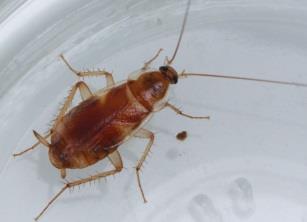
Similar to German but no brown stripes on head. Distinct brown banding
Few colonies in southern counties.
Control similar to German; also check bedrooms/living rooms. Can glue egg cases in furniture
